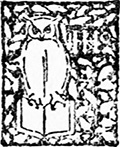
THE
WRITING OF NEWS
THE
WRITING OF NEWS
A HANDBOOK
WITH CHAPTERS ON NEWSPAPER
CORRESPONDENCE AND COPY READING
BY
CHARLES G. ROSS
ASSISTANT PROFESSOR OF JOURNALISM IN THE UNIVERSITY OF MISSOURI

NEW YORK
HENRY HOLT AND COMPANY
Copyright, 1911,
BY
HENRY HOLT AND COMPANY
Published November, 1911
PRINTED IN THE U. S. A.
TO
MY MOTHER
PREFACE
In preparing this volume the author has had inmind the needs not only of students in schools ofjournalism, but of others who may desire a concisestatement of the principles that govern the art ofnews writing as practiced by the American newspaper.It is hoped the book will prove helpfuleither as a laboratory guide in the school room oras a text book for home use.
As the title indicates, the book deals with onephase of journalism, the presentation of the newsstory, more especially with the writing of the story—thereporter’s part in the day’s work. No attempthas been made to go into other aspects ofjournalism—the writing of editorials, the administrativefeatures of the work, the delicate adjustmentthat every newspaper must make between itsbusiness and news departments—except in so faras they bear directly upon the subject in hand.
The term journalism is broadly used here tomean all branches of newspaper endeavor. In commonwith other newspaper men, the author admitsvian aversion to the word as restricted to the workingfield of the men who get and write the news.They call themselves not journalists, but reportersor newspaper men. It is for newspaper men andwomen in the making that the book is primarilydesigned.
The nature of newspaper work makes it impossibleto formulate an all-sufficing series of rules bywhich the news writer shall invariably be guided.But there are certain well-defined principles, largelytechnical, that set apart the news story as a distinctform of composition, and these the author has triedto put down simply and concisely—after thefashion of the news story itself. Going beyond thecommon practice, there is wide divergence amongnewspapers in the details of “office style.” Methodspeculiar to the individual paper can readily beacquired by one grounded in the essentials of thecraft; hence only the more significant points of departurefrom the generally accepted practice havebeen noted.
Practically all the examples in the book are frompublished news stories, reproduced in most cases exactlyas they appeared in print. In some, for obviousreasons, fictitious names and addresses havebeen substituted for the real. With one or two exceptionsviithe examples illustrating right methods ofnews presentation have been chosen not for special